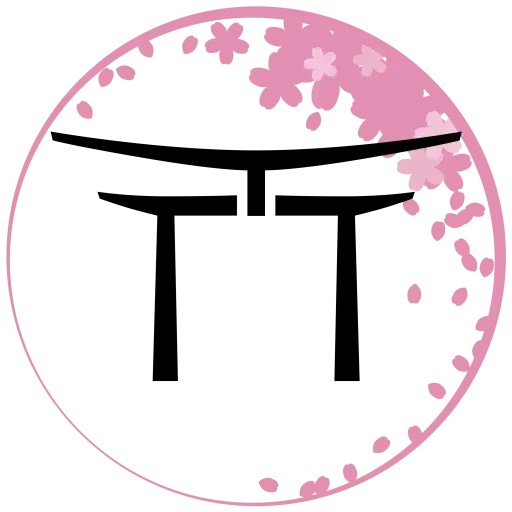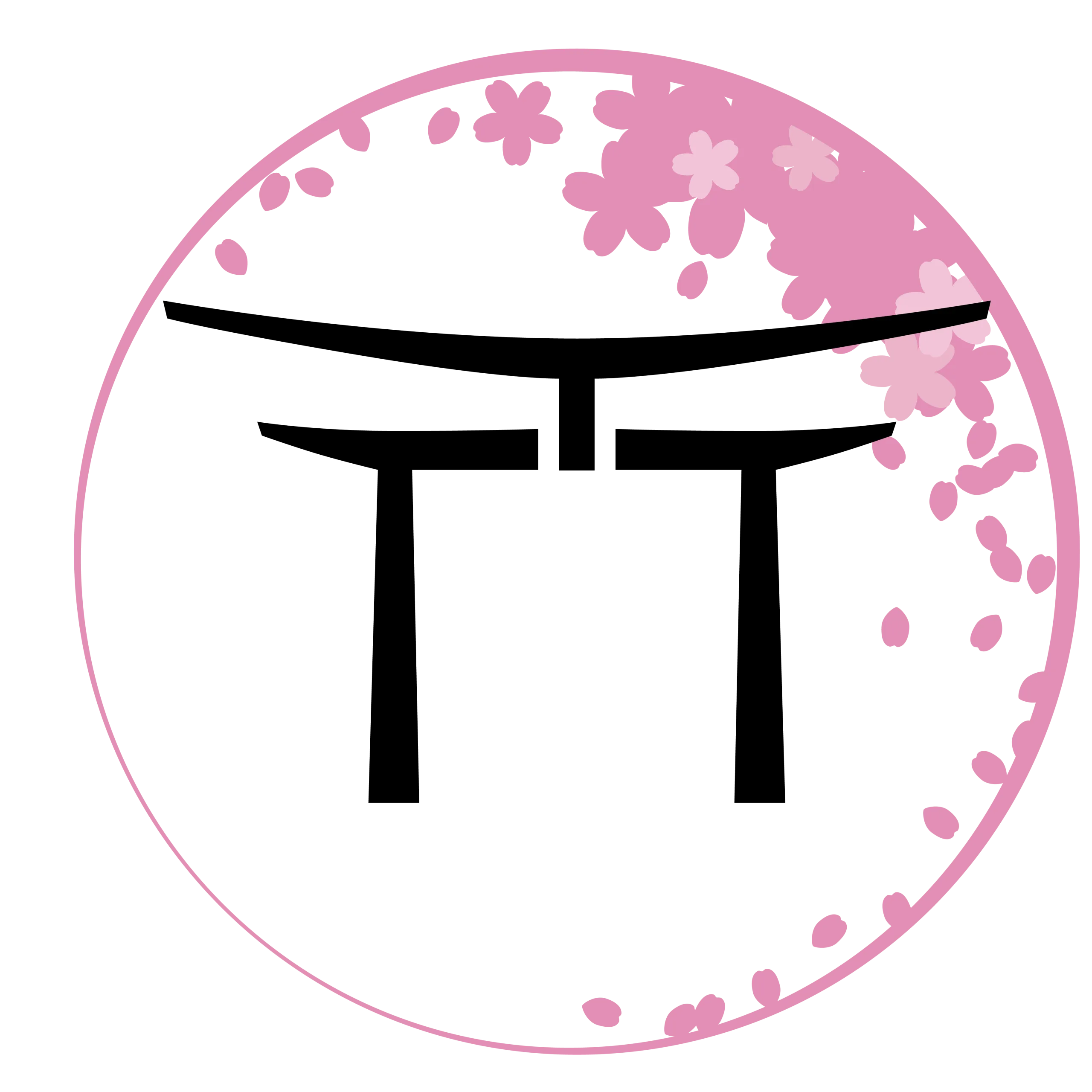An Overview of Preschool and Kindergarten in Japan (Yōchien)
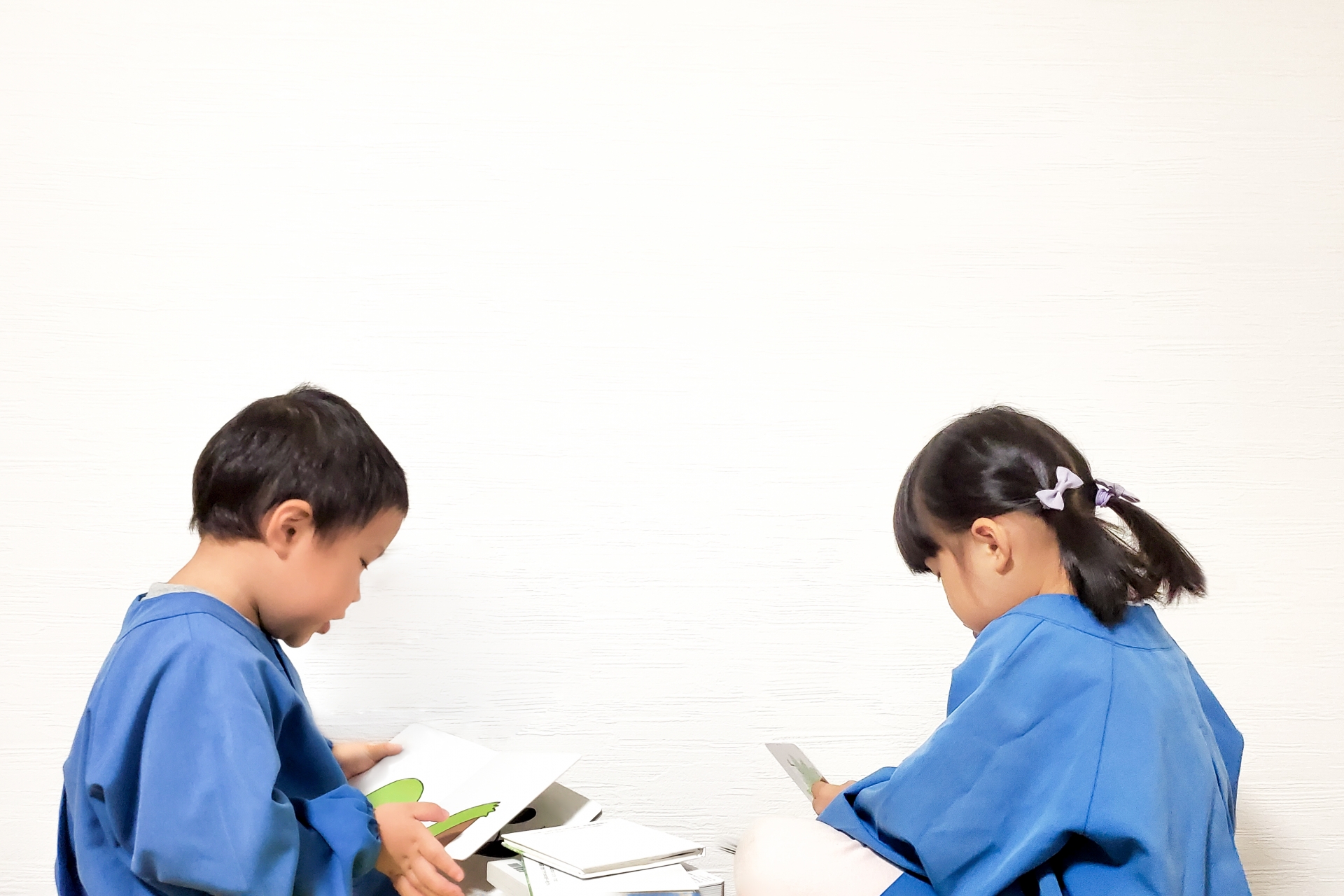
Last Updated on July 23, 2025 by Kay
This post may contain affiliate links, meaning I may earn a small commission on any purchases through those links at zero additional cost to you. Whatever I make goes to keeping this website running and I am forever grateful for the support. See my Privacy Policy for more information.
Preschool or kindergarten in Japan is known as yōchien (幼稚園) in Japanese. It is an educational institution for children ages 3 to 5, lasting three years, to help prepare them for elementary school.
The concept of yōchien was a bit confusing to me at first before my daughter started daycare (hoikuen) since in Canada, kindergarten is the start of elementary school while preschool is the precursor to kindergarten. However, in Japan, elementary or primary school starts at Grade 1 when children are 6 years old.
Before children start elementary school in Japan, they have the option of attending yōchien, considered both preschool and kindergarten, for three years.
Since my daughter attended daycare for two years and has experienced attending two different yōchien (preschool/kindy), I thought I would share the differences between yōchien and hoikuen, and go into detail about applying, interviewing, and preparing for yōchien.
There is a LOT of information in this article so buckle up!
Table of Contents
- Differences Between Yōchien (Preschool) and Hoikuen (Daycare)
- Types of yōchien
- A Day at a Japanese Kindergarten
- When to Apply for Yōchien
- How to Apply for Yōchien or Kindergarten in Japan
- The Interview for Yōchien — What to Expect
- Exams for Yōchien
- How to Prepare for Yōchien in Japan
- Entrance Ceremony for Yōchien
Differences Between Yōchien (Preschool) and Hoikuen (Daycare)
Some of you may be wondering what the differences are between Japanese kindergartens (yōchien) and daycares (hoikuen). Why send your child to one rather than the other?
Although they have many similarities, there are some key differences as well.
Application Process
Usually, both parents must work full-time for their child to be accepted into hoikuen. If there’s space at the hoikuen, sometimes they’ll accept kids if a parent works part-time. However, hoikuen can be very competitive to get into, especially in big cities if you don’t work full-time.
In contrast, parents don’t need to prove their employment for a child to get into yōchien as it is focused more on education than child care.
Education
Japanese kindergartens are under the jurisdiction of the Ministry of Education, Culture, Sports, Science and Technology (MEXT), which means its curriculum focuses more on educating children rather than childcare.
Children learn to become more independent in terms of acquiring various skills that are essential for daily life by doing many things on their own, such as changing into indoor shoes (known as uwagutsu [上靴] or uwabaki [上履き]), brushing their teeth, going to the washroom, changing clothes, packing up their stuff when it’s time to go home, and so on. Note that many daycares also teach similar skills, but yōchien has a set curriculum.
Children also engage in various activities like dance and crafts and get to play with each other to hone their creativity, problem-solving, and interpersonal skills. Some yōchien also offer extracurricular lessons as well for an additional cost. The one my daughter is attending at the moment has English lessons, gymnastics, programming, soccer, and dance. (We put her in gymnastics and dance.)
Cost
Starting in 2019, the government has made yōchien free, meaning you don’t have to pay any tuition in theory. Actually, if your child attends a private yōchien (more on that later), the city will only cover a certain amount, so you’ll have to pay the rest. This isn’t too large, though, and tends to be under 10,000 yen a month.
You will also need to pay for things like the application processing fee, a one-time admission fee (入学費・nyuugakuhi or 入学金・nyuugakukin), and also the cost of things like lunches, uniforms, and school supplies (more on that below). The application fee and entrance fee for my child’s previous yōchien was 3000 yen and 73,000 yen, respectively. The fees for her current yōchien are 5000 yen and a whopping 100,000 yen, respectively.
Yōchien also has things like field trips, which parents will have to pay for out of pocket, although it’s usually around 900 yen.
On top of all of this, some yōchien only use specific banks, meaning if you don’t already have an account with the bank they use, you’ll have to open an account with their bank in order to pay for fees via bank transfer. (Oh Japan…)
In general, all of these fees may make yōchien the more expensive option overall, but if the hoikuen in your area are at full capacity or you don’t like the ones nearby (as is the case for the area I live in), yōchien is a great alternative. As mentioned earlier, yōchien also focuses on helping children develop the necessary skills for elementary school, helping with the transition when it’s time for them to start. For some parents, this preparation is worth the cost.
Some yōchien are also escalator schools, meaning that your child will be able to automatically enter the related elementary school up to university! This means no studying for entrance examinations and no cram school, leaving your child with a lot more free time for their hobbies.
Uniforms
Preschools in Japan have uniforms, and this can be pretty expensive.
My daughter’s previous and current preschools have three different types of uniforms: gym/sports (体操服・taisoufuku), and two types of formal uniforms — one for fall/spring and another for spring/early summer. She also needed a smock.
Here’s an idea of what the different uniform types might look like:
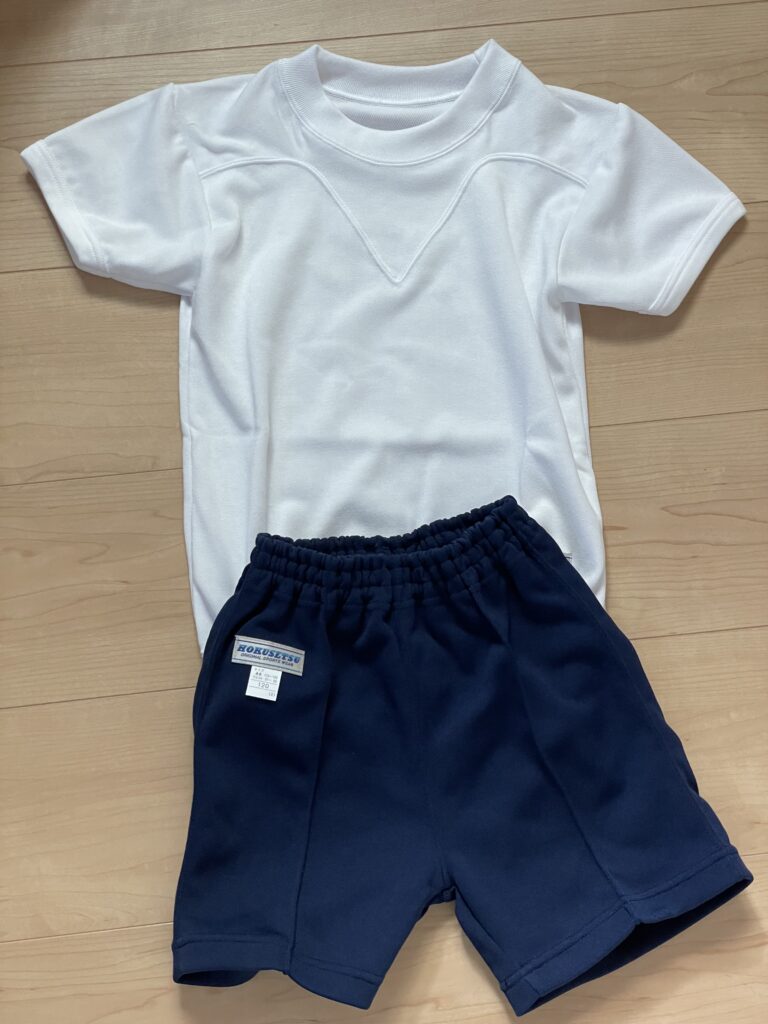
Taisofuku (gym clothes)↑↑↑
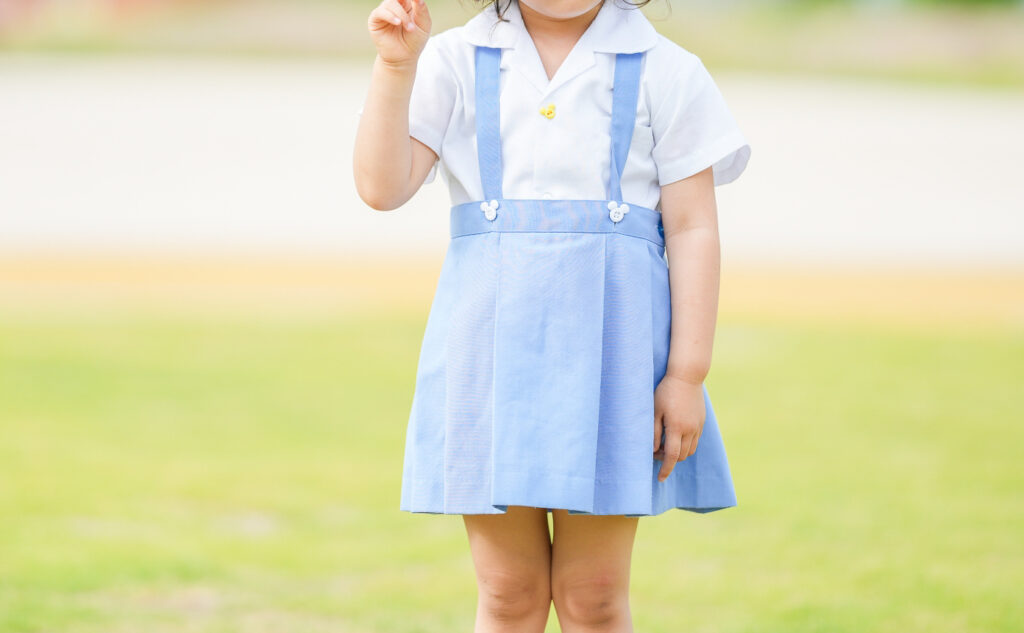
Spring/summer uniform for girls↑↑↑
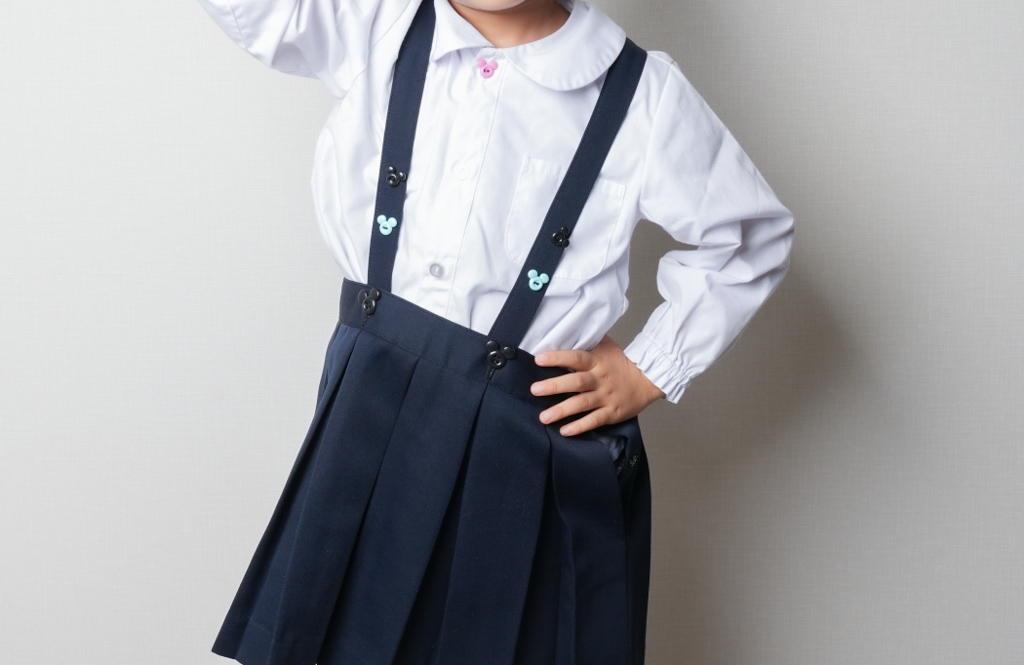
Fall/winter uniform for girls↑↑↑
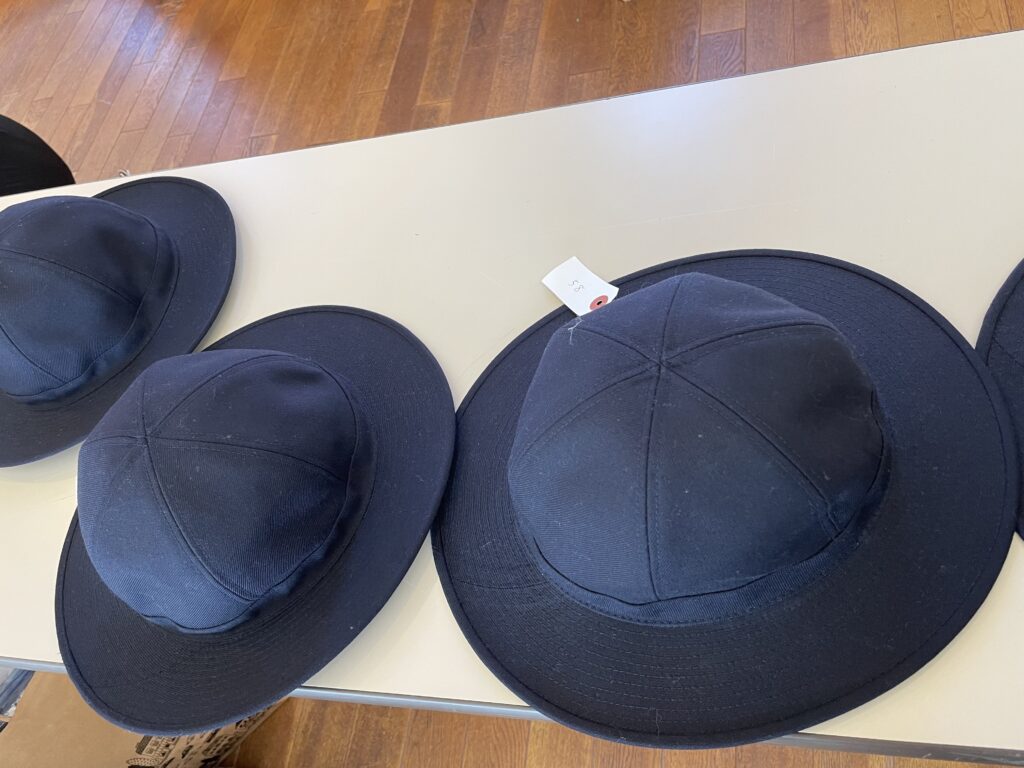
Hats for the fall/winter uniform↑↑↑
I’ve found that the process of buying the uniforms also varies between yōchien.
My daughter’s previous yōchien didn’t offer samples of the uniforms so parents could only have the tailor look at their child and suggest a size as well as how many sets to get.
However, my daughter was able to try on different sizes of uniforms at her current yōchien. This was really helpful for obvious reasons.
Yōchien uniform costs 💸💸💸 She’s also only wearing this until July since we’re moving 😅
(Looked at second hand ones but all were in terrible condition) pic.twitter.com/FJ4O7FTTay
— Kay 🌙 (@tinyintokyo) July 13, 2022
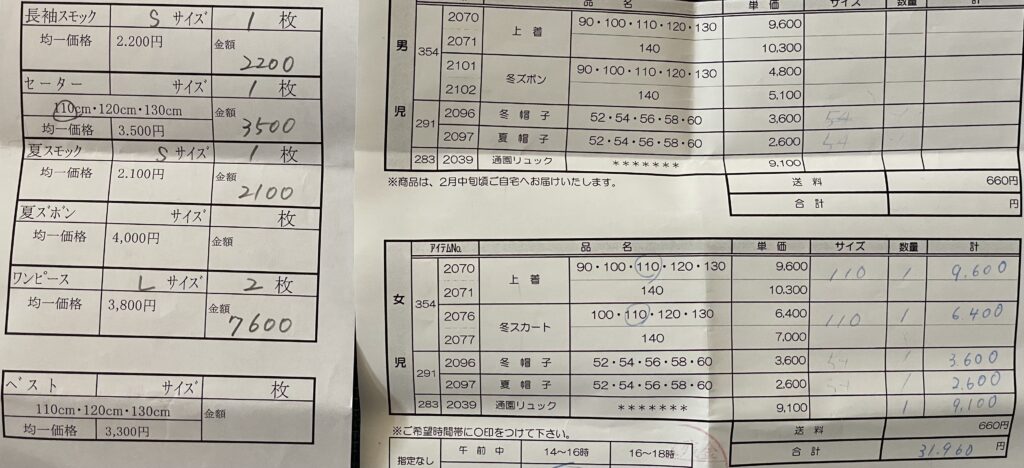
Although the cost tends to be high, these uniforms are meant to last three years. You can also get second-hand uniforms as well but in our case, there wasn’t much to choose from as the ones available had taken quite the beating over the years.
One thing to note is that both yōchien my daughter attended did not provide high white socks, which are required for events like the opening ceremony or plays.
You can get these at stores for kids like Nishimatsuya or Akachan Honpo, but I found that sometimes they didn’t have the size I needed or were pretty plain, so I got my daughter’s from Amazon Japan.
If you’re worried about the school having a rule that the socks can’t be too “frilly” or cute (because, let’s face it, it happens), there are also simple unisex ones on Amazon Japan that are very affordable (and cheaper than stores).
Transportation
Unlike most hoikuen (especially in the city), kids going to yōchien can be picked up by bus if the preschool is far from their house. This may come at an additional cost. There are always teachers on the bus so you can feel assured that your child will be supervised.
I’ve also seen some teachers from my child’s previous yōchien pick up and drop off kids at the nearby train station.
Although my child didn’t take the bus at her previous yōchien since it was very close, she is now taking the bus to her current yōchien and we pay close to 40,000 yen every year for this service.
Hours
Yōchien typically has shorter hours than hoikuen, although if you are working, you can extend the hours your child attends for a small fee. You don’t even have to be working full-time! Part-time work of even four hours a day may allow you to apply for longer hours. All you have to do is talk to the school to find out the requirements and what documents you need. And if you’re job hunting, you can apply to use the after-hour care for free for up to three months!
I sometimes use the yōchien’s afterschool care when I’m overwhelmed with work. Otherwise, I like spending afternoons with my daughter. After barely being able to see her on weekdays due to working full-time for almost two years of her life, I’m going to take advantage of these shorter hours!
In terms of my daughter’s yōchien, typical drop-off is between 8:30 AM to 9:00 AM and pick-up is from 2:30 PM to 2:45 PM. Wednesdays end before lunch, which means I have to pick up my kid between 11:30-11:45 AM. It’s a little annoying because I can’t really do any work on Wednesdays.
Yōchien also tends to have more days off than hoikuen. For instance, in October my daughter had two Mondays off due to the yōchien’s foundation day and Sports Day (undoukai).
There are also no naps at yōchien; however, children continue to take naps at hoikuen up until they’re around five, depending on the daycare and the child.
Renrakucho (Communication Book)
When my daughter attended daycare, we were required to write something in the renrakucho every day, which could be annoying when there was nothing we really needed to communicate to the teacher.
However, with both her preschools, we only write in the renrakucho if there’s something we need the teacher to know, and vice-versa. As you can see below, this renrakucho is a literal notebook with lined pages and nothing else.
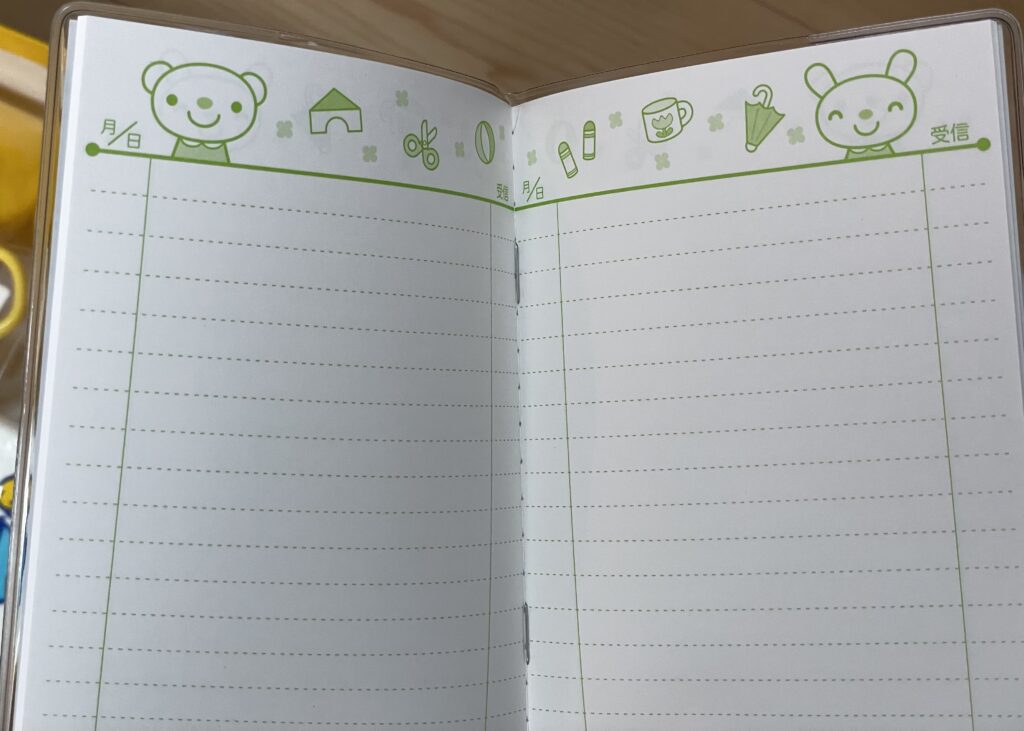
We also have a card called 健康チェックカード (kenkou chekku ka-do), pictured below, which is where we report our child’s physical condition. Here we write down her temperature in the morning, indicate whether or not she has a cough or fever, whether she ate breakfast, and if she’s allowed to play outside.
As you can see, it is much less detailed and much easier to fill out compared to the information that typically needs to be provided every day to hoikuen.
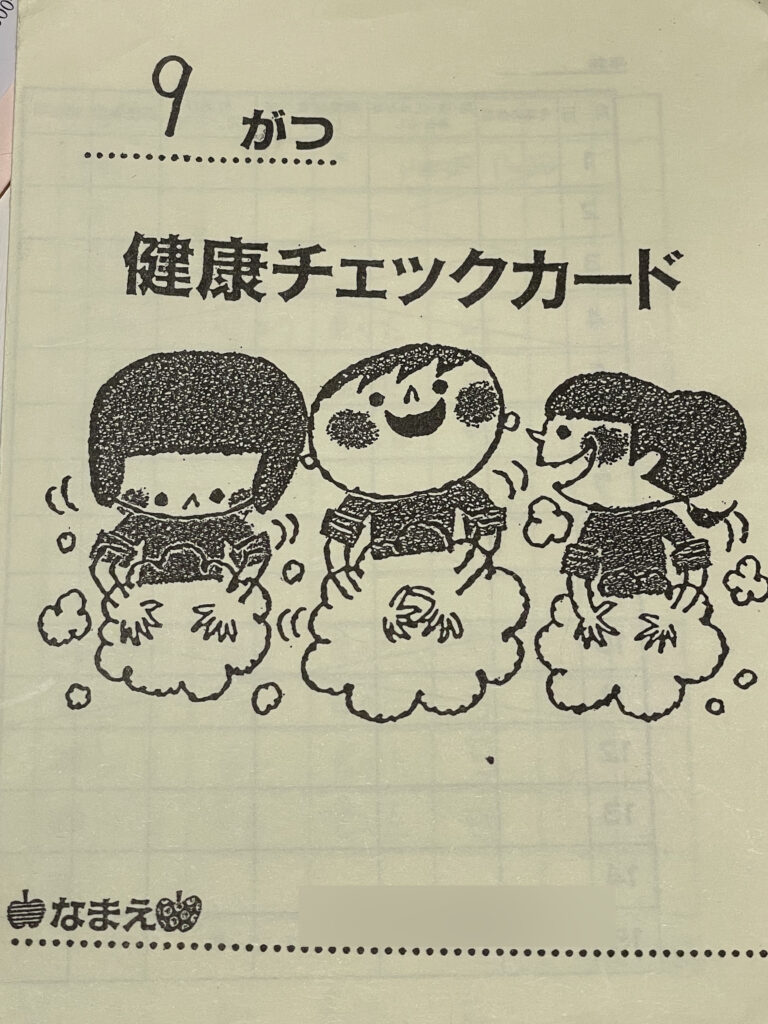
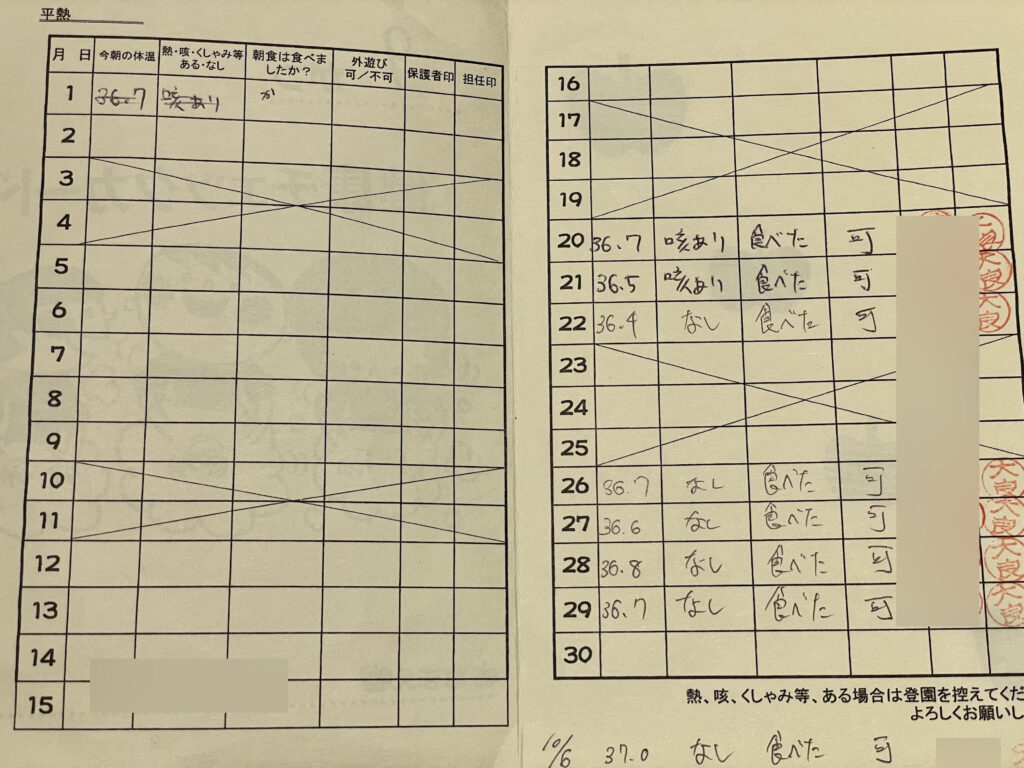
(Much of September wasn’t filled out because we were in Canada.)
If you’re worried about how to communicate with the teachers at your child’s preschool, I’ve written an article about helpful Japanese phrases for daycare and preschool, so take a look!
School Vacations
Just like any other school, yōchien has vacations: Spring, Summer, and Winter.
Spring vacation (春休み・haru yasumi) tends to run from the end of March to early April. Children only attend school in the morning during the last week of the semester and the first week of the semester, so it feels like a month-long vacation (for me at least).
Summer vacation (夏休み・natsu yasumi)is usually mid-July to late August or the first week of September.
Winter vacation (冬休み・fuyu yasumi)is from mid-December to early January.
If you need to work during these times, you can either extend your child’s hours in the yōchien (for a fee) or place them in ichijihoiku (more on my personal experience with that in an upcoming article).
Parental Involvement
The level of parental involvement varies but overall, yōchien expects more from parents than hoikuen.
The yōchien my daughter attends seems to have something I have to attend almost every month. For instance, a class play/performance (発表会・happyoukai), parents’ observation day (参観日・sankanbi), etc.
Some of these events are held on a weekend (such as Sports Day). In this case, the following Monday is a “day off” and there’s no yōchien.
Some other yōchien may require that a parent comes in once in a while to help out (thankfully not the case with either of my daughters’ yōchien). There is also a PTA, but at her previous yōchien, this consisted of only two parents who had older children who attended the yōchien in the past (or are in a higher grade).
At her current yōchien, people volunteered to be part of the PTA.
Lunches/Bento days
In general, most yōchien (at least in Kansai) provide lunch for children. However, unlike most hoikuen, there may be days when you need to prepare a bento for your child.
At my daughter’s current yōchien, this occurred about once or twice a month when she was a first-year student. However, from the second year onward, I didn’t need to prepare any bentos.
Below is an example of the types of lunches yōchien provides:
View this post on Instagram
So there you have it! I have a series of articles on daycare in Japan if you would like more information about hoikuen, so please take a look!
I’ve also written an article about how I make bentos for my daughter for those who want some helpful, time-saving tips.
Types of yōchien
There are three types of yōchien in Japan:
National (国立幼稚園・kokuritsu yōchien)
These are owned by the Japanese government and are sometimes associated with a national university. From my understanding, there are very few of these and very few children are accepted. Tuition is completely subsidized.
Public (公立幼稚園・kouritsu yōchien)
These are either owned by the city (市立幼稚園) or the prefecture (県立幼稚園). These also accept a limited number of students. Unlike private yōchien, these might only accept children from age 4. However, the tuition is completely subsidized.
Private (私立幼稚園・shiritsu yōchien)
This is the most common type of yōchien. About 80% of children across Japan attend private yōchien. These are owned and run by companies, organizations, or religious groups. This includes international yōchien like Kids Duo. The tuition is only subsidized by the government up to a certain amount, but parents don’t have to pay much out of pocket and at times nothing at all depending on the school.
The yōchien my daughter first attended and the one she’s attending now are both private and owned by companies.
A Day at a Japanese Kindergarten
Here is an example of what a typical day at a kindergarten in Japan looks like:
| 8:30-9:00: Drop-off. Kids either arrive by bus or are dropped off by a parent. Children in Japan do not walk to kindergarten alone! (However, they do once they’re in elementary school.) 9:00-9:30: Teacher takes attendance. Kids get ready for the day by taking out drinking cups, hand towels, etc. 9:40-10:00: Free play 10:00-10:30: Short interactive lesson about a topic such as insects or plants. 10:30-12:00: Music time (singing, dancing, etc) 12:00-12:45: Lunch 12:45-13:30: Playing outside 13:30-14:00: Reading books and getting ready to go home by putting away belongings. 14:00: Home time, more play for kids staying later, or the start of extracurricular activities. |
Every kindergarten has its own schedule, which can sometimes be found online, so try to look up the various yōchien near you!
When to Apply for Yōchien
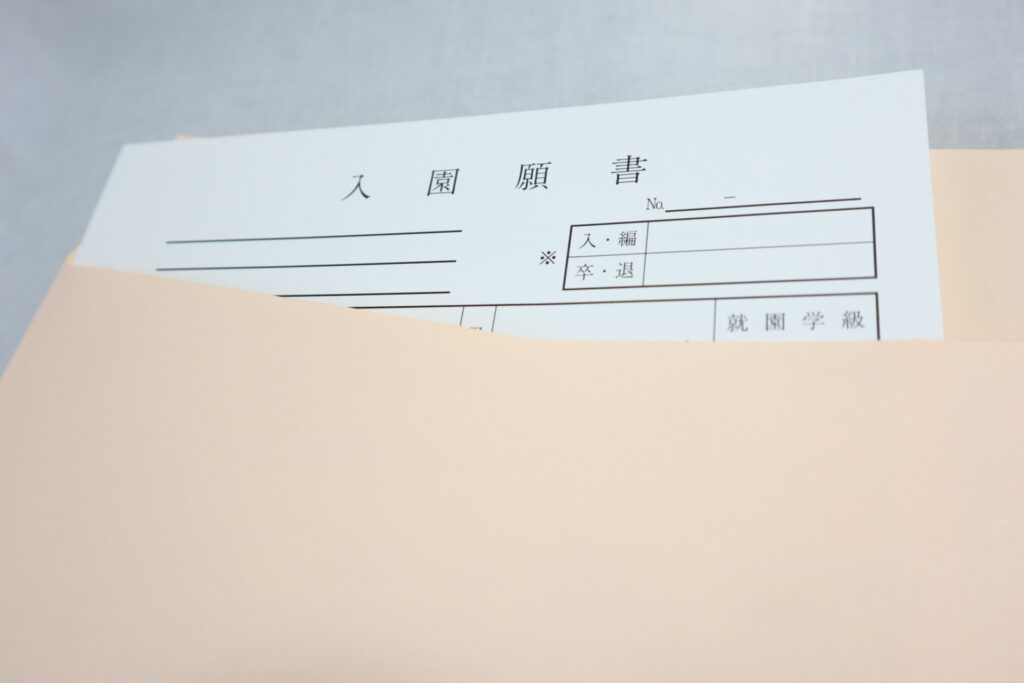
Typically, applications for yōchien begin from the late summer to early fall. Children can apply for yōchien as long as they are three years old by April of the year of entry.
Previously, I wrote about my daughter attending pre-preschool (pre-yōchien) in Japan and it was there I discovered that my daughter could actually apply to attend preschool in June… for a September start!
Typically, the start of the school year in Japan is in April, but some preschools have an early entry for a select number of students. This class only had 12 spots but in April, my daughter’s class and over 50 more kids joined the first-year nensho class.
Yōchien is usually a three-year program. The first year of yōchien is called nenshō (年初), the second is called nenchū (年中), and the third is called nenchō (年長).
Like with daycare, it’s best to apply for the first year of yōchien (年初) to increase your chances of getting accepted, as children tend to stay at the same school and move up to the next class in the new school year. This means there are far fewer available spots for nenchū (年中), especially when it comes to private yōchien, when your child is around four years old, and nenchō (年長) when they’re around five.
For example, a private school may have 85 spots for the first year of yōchien but only five spots each for the other two years.
However, some public yōchien are only for two years. This means they start accepting children when they’re four. In this case, nenshō (the first year) is when they’re four. There is no nenchū. Similar to other yōchien, the children at these yōchien become nenchō in their last year at five years old.
This is also something to keep in mind if you’re thinking about moving while your child is in the first or second year of yōchien. Although my daughter started her current private yōchien in July, so a few months after the start of the school year, she was in her first year of yōchien so the school secured the spot for us when she was accepted.
(As a reminder, my daughter was in a special early entry class that started in September 2022 so she wasn’t a 年初, or in her first official year of yōchien, until April 2023.)
How to Apply for Yōchien or Kindergarten in Japan
If you’re interested in enrolling your child into yōchien, contact the school and see if they have any information sessions and if they’ll let you take a look around the school. This is the time you may also be able to receive the application form, although this varies depending on the yōchien.
For example, very competitive yōchien will only hand out a select few application forms at a particular date and time, which means parents start lining up very early in the morning to get them. Some even charge for the application form!
I also attended information sessions (説明会・setsumeikai) for my daughter’s previous yōchien in July (for September entry) as well as her current yōchien in September (for April entry). The school principals provided an overview of the school, their educational principles, and policies, and shared information about the school year, expenses, parental involvement, and after-hours childcare.
This is also a chance to tour the school and ask any questions you have. Some questions, if not already addressed, may include:
- How they approach toilet training
- Which elementary schools the children end up going to
- What to wear for the interview and what to expect
- What children should know or be able to do before they start preschool (readiness)
- What is the student-to-teacher ratio?
- What is the average number of applicants?
Note that I needed to register in advance for these information sessions and for some popular yōchien, these spots may be limited. I was also able to bring my daughter to the information sessions but some yōchien may not allow this.
If you do bring your child, make sure they have something to keep them occupied as they may get bored. Thankfully my daughter’s friend from pre-yōchien was there so they played together.
The Interview for Yōchien — What to Expect
Most yōchien have interviews in which the staff members ask children basic questions and see if the family is a good fit for the yōchien. However, some yōchien, especially in the countryside, don’t require students to interview, so all you have to do is hand in the application form.
If the yōchien you’re applying to does conduct interviews, it will either occur a few days after you submit the application form or on the same day. Of course, the yōchien will let you know beforehand at their information session about their application and interview system.
If you have another young child who is not interviewing, make sure you ask the yōchien in advance if you’re allowed to bring them.
The contents of the interview will vary depending on the yōchien, but when it comes to parents, make sure your answers are consistent with what you wrote on the application form and that you’ve done your background research on the yōchien.
I was a bit intimidated by the interview, especially when my friend told me there are magazines all about getting your kid into yōchien.
As my daughter applied to two yōchien and had interviews for both, I’ll share information about each below.
Yōchien Interview Questions: Example 1
The application date and interview for my daughter’s previous yōchien was in July for September entry. We had to hand in the application form between 9 AM to 11 AM and pay the application fee of 3000 yen. The interviews were held on the same day from 1:00 PM.
I wore a nice black dress that I usually wore to the office when I had important meetings or events, my husband was in a polo shirt and dress pants, and my daughter was in a collared black dress. Some of the other parents weren’t as formally dressed as us but they were not in jeans and a t-shirt. Both parents don’t need to attend the interview but my husband wanted (and was able) to come.
We were led into a room where there were two teachers, one who seemed like she had seniority and a young one who knew my daughter from pre-yōchien.
The interview consisted of my daughter doing the following:
- Stating her name and age
- Indicating who she came with
- Identifying colors on a tray of pastel crayons
- Naming objects on flashcards
- Drawing a circle
The teachers asked us what our daughter likes doing at home, if she’s toilet-trained, if she has any allergies or medical problems, which country I’m from, and how much English and Japanese we speak at home.
She did really well and received a little bag of small books at the end. Although she answered in English at times, I didn’t think it was a problem, and neither did the yōchien as we received an acceptance letter in the mail that very day. Unlike the second yōchien (which I will talk about next), students who passed the test were chosen via lottery.
Yōchien Interview Questions: Example 2
As mentioned several times already (sorry for being such a broken record!), my daughter started attending another yōchien since we moved. This one is a private and prestigious yōchien that is (somewhat) an escalator school (エスカレーター学校). This means that my daughter will be automatically accepted into their elementary school, junior high school, and high school. I say it’s a “somewhat” escalator school because, unlike some others, there is no university associated with the school. Instead, the school is run by a very famous company in Japan.
The interview for this yōchien was also held on the same day we handed in the application form, this time in October but for April entry. We could come anytime between 9:00 AM to 1:00 PM.
We decided to go at 11:00 AM and were among the last families to interview. After handing in the application form and paying the application fee (5500 yen), my daughter was given a name tag and a sticker sheet before joining some kids in a room for the examination (more on that below) while we waited in another room with the other parents. There were only two other families there and all of them were in suits, which made me feel underdressed despite feeling overdressed with the first yōchien.
After the children completed the examination, it was time for the interview. The families were interviewed one by one in a room by the head of the yōchien and a teacher.
They asked my daughter her name and age. When my daughter replied, she accidentally said she was two years old as her birthday was two months prior and she still hadn’t quite grasped that she was a year older. Then they asked us why we chose that yōchien and about our daughter’s strengths and weaknesses (長所と短所・chousho to tansho). It was quite a short interview and lasted less than five minutes, which was surprising to me.
This yōchien didn’t have a lottery system to determine who passed. But I guess we did well because that night we received a phone call and learned that our daughter had gotten in! She had a 50% chance of being accepted and over 100 children had applied, so we are really glad everything worked out.
Exams for Yōchien
Some prestigious national and private yōchien have entrance exams (幼稚園受験).
These aren’t anything to be worried about in my opinion, it’s just a chance for the teachers to observe the kids and see how they interact with others.
My daughter’s previous yōchien had no examination (although the flashcards felt like an exam so I may be wrong); however, she had to do an examination for her current yōchien. She was observed by the teachers for ten minutes with two other kids in a classroom. Afterward, she seemed really happy and showed off the stickers she got. Based on what she told us, they read some books and played with the teachers.
How to Prepare for Yōchien in Japan
Unsurprisingly (as this is Japan), you’ll probably have a lot of paperwork to hand in. This paperwork will likely consist of things like basic information about your child (complete with a photo), a photocopy of their health insurance card, emergency contact information, allergy information, an agreement to disclose the provided information with school staff, and so forth. For her previous yōchien, we received 19 forms to fill out, although we only needed to complete 15 because our child doesn’t have allergies. However, for her current yōchien, we only had to hand in around seven forms.
We also needed to take our daughter to the pediatrician to have a basic check-up, which took less than five minutes as she doesn’t have any health or cognitive problems.
As mentioned earlier, you will likely have to purchase a uniform as well as some school supplies. Here are the supplies we got for our daughter for her previous yōchien:
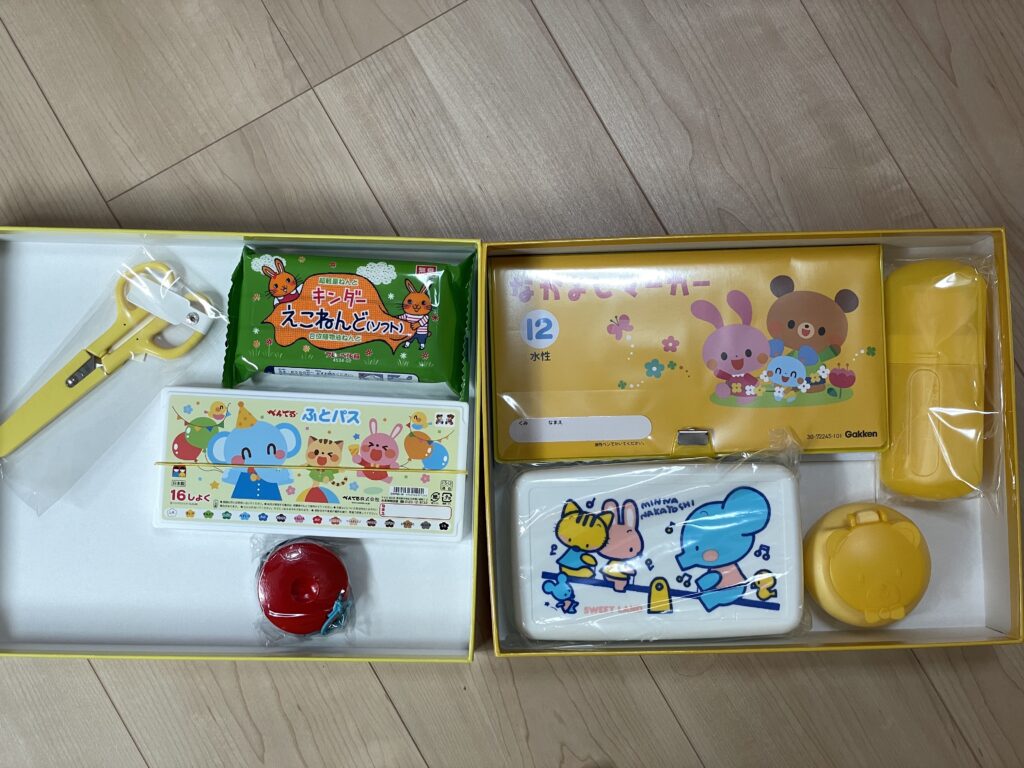
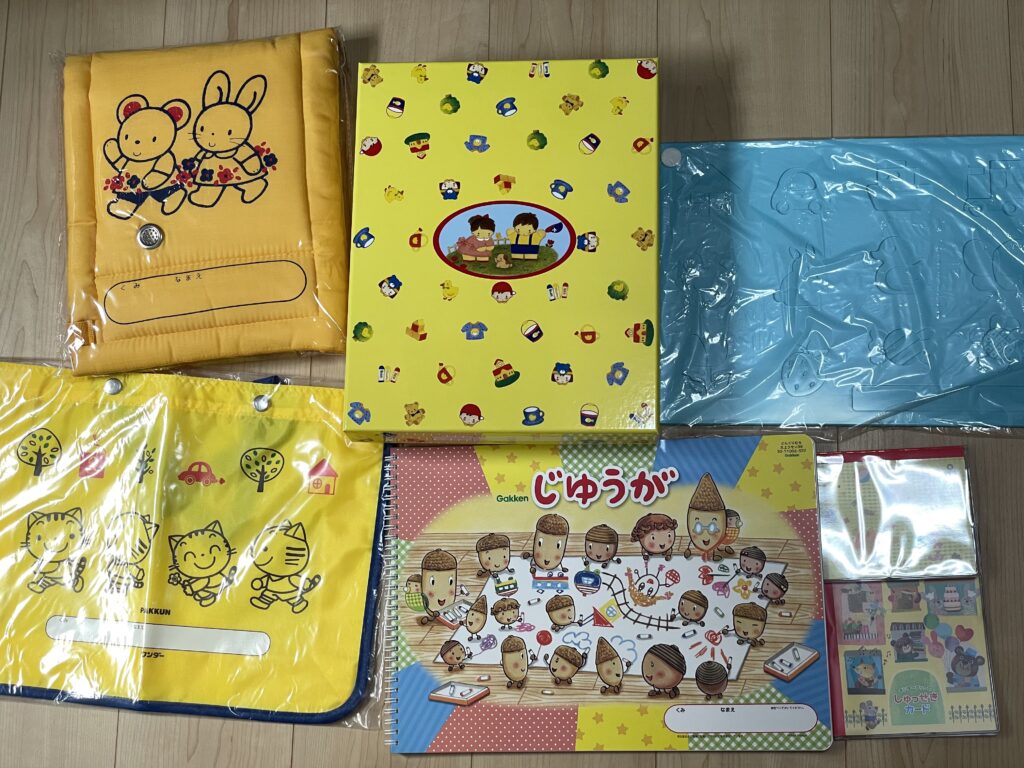
And here are the ones for her current yōchien:
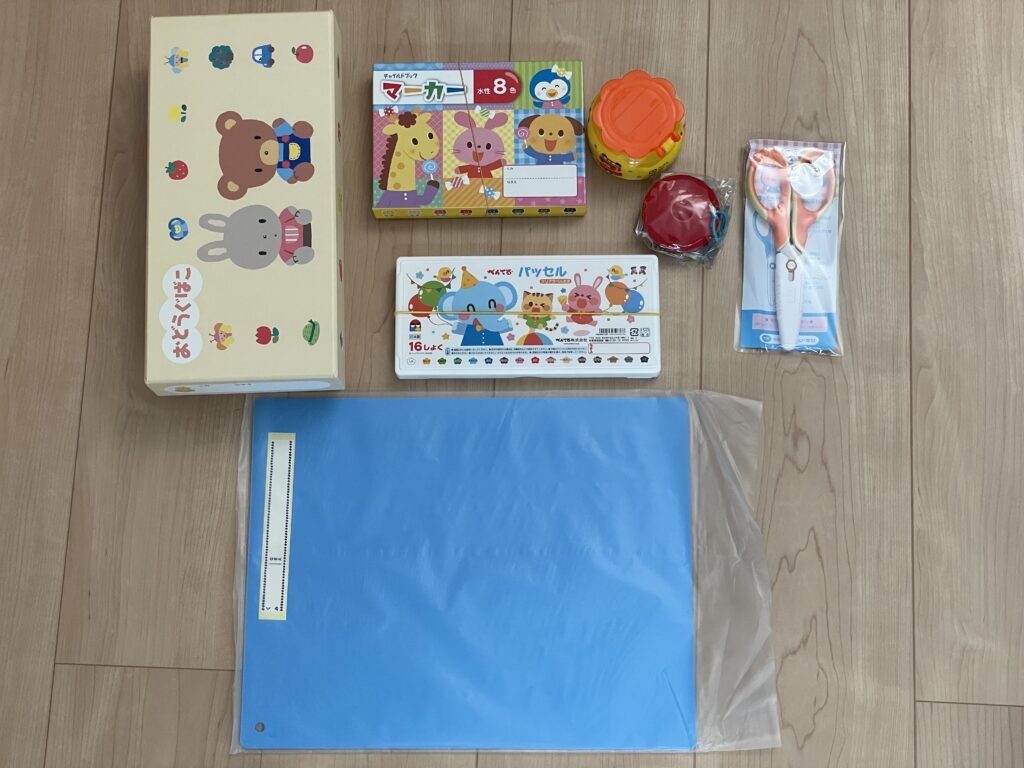
The supplies that are typically needed include:
- However, for her current yōchien, we had to buy everything as a set despite already having some of the items.
- My daughter also needed the following:
- indoor shoes (上靴・上履き)
- a plastic cup (for drinking out of and gargling) (プラコップ)
- a toothbrush (歯ブラシ)
- small bags with loops(巾着袋)
- hand towels with loops(ループ付き手拭きタオル)
- a cloth mat for lunch (ランチョンマット)
- a spoon and fork for lunch
- extra masks and diapers/underpants
- a tote-type school bag (絵本バッグ or 手揚げ袋)
- Protective hoods/cloth helmets for disasters
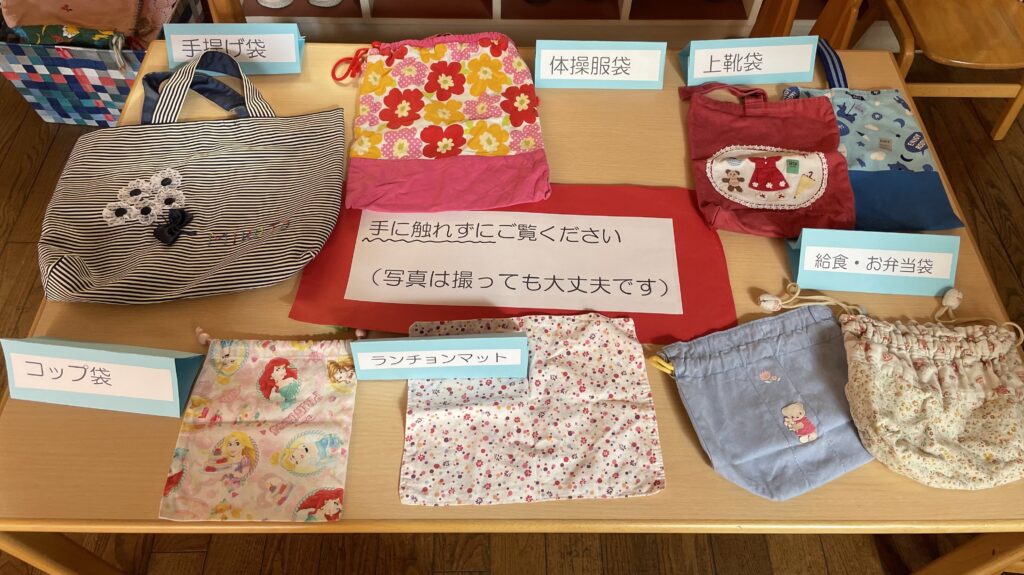
All the different types of bags my daughter needs at her current yōchien.
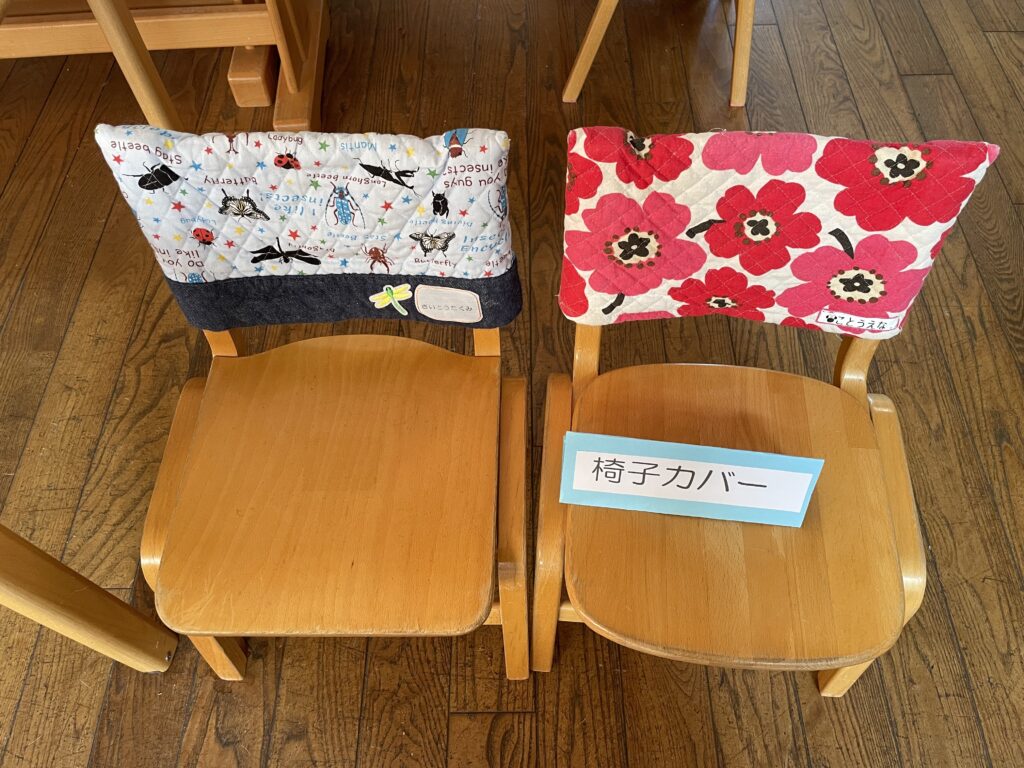
Chair covers
As everything needs to be labeled, it’s a great idea to get a name stamp for your child. There are various kinds, like this one on Amazon Japan or this one on Rakuten. These will last you for your child’s entire schooling, so it’s worth the cost!
In terms of payment, this also varies depending on the yōchien. For my daughter’s previous yōchien, we could pay for the uniforms and supplies later but for her current yōchien, we had to pay for everything in cash on a scheduled day that kids could try on the uniforms.
Entrance Ceremony for Yōchien
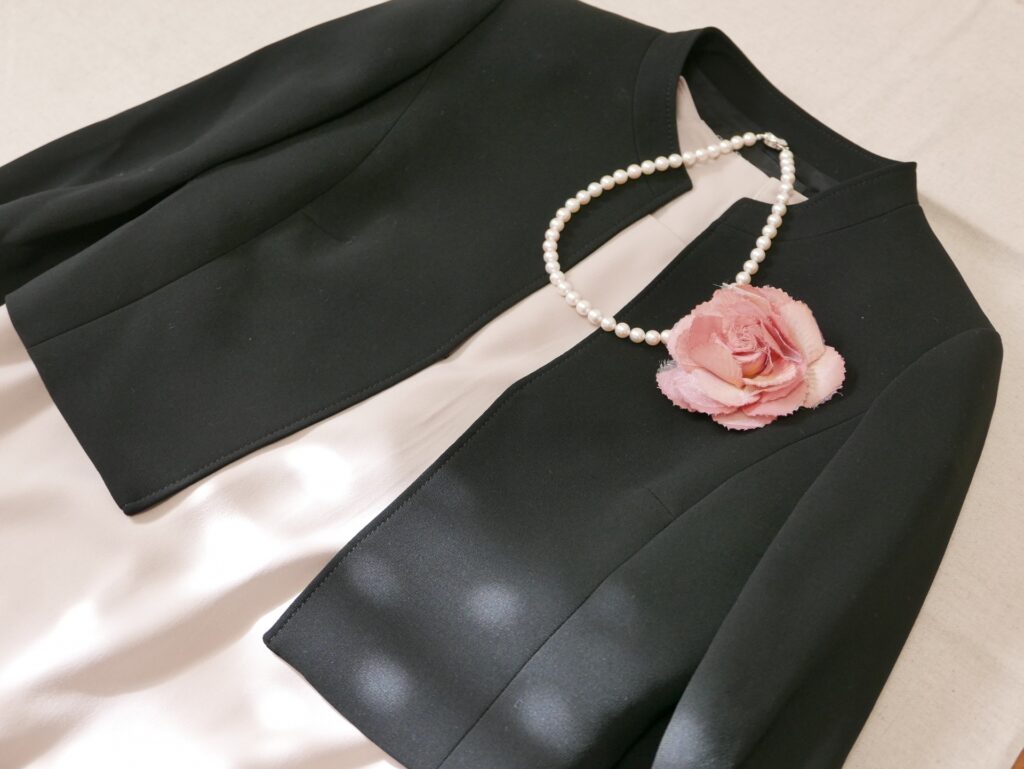
Similar to daycare, there is an entrance ceremony (入園式・nyuuenshiki) for new pupils. It’s important to be prepared and dress nicely for this ceremony in a formal dress and/or a suit. Make sure you have indoor slippers as well!
I will likely be adding more information to this article throughout my daughter’s three years in yōchien. But if there’s anything you’re wondering about or think should be included, please let me know!
Related Articles:
Parents’ Day (Sankanbi) at a Preschool (Yōchien) in Japan
Helpful Japanese Phrases for Daycare (Hoikuen) and Preschool (Yochien)
